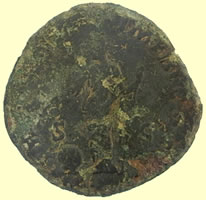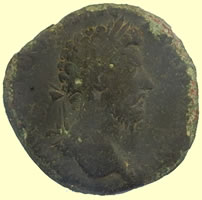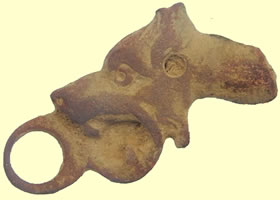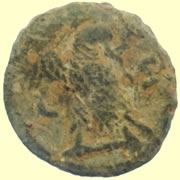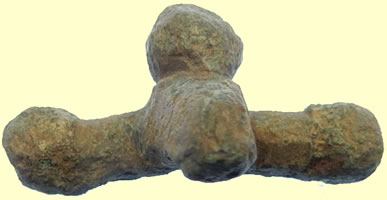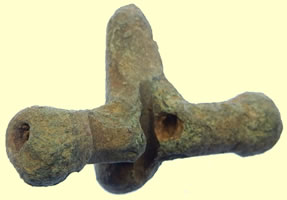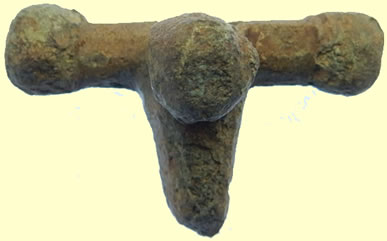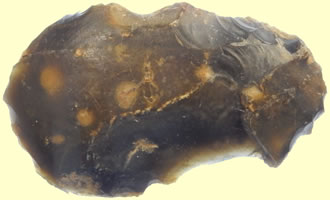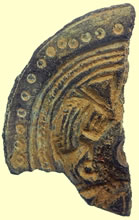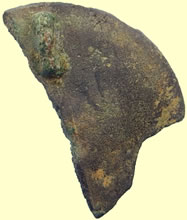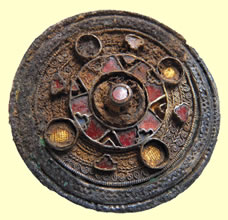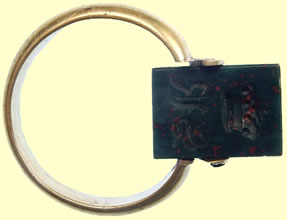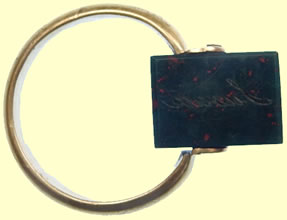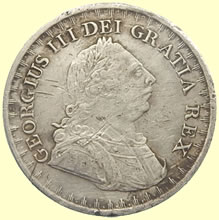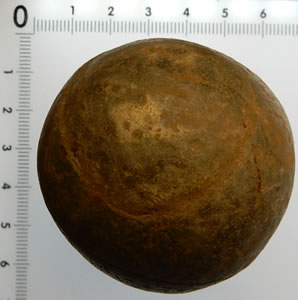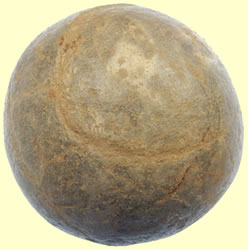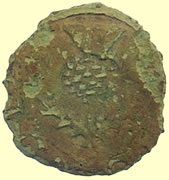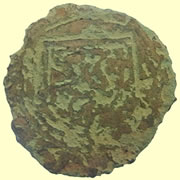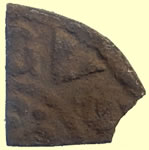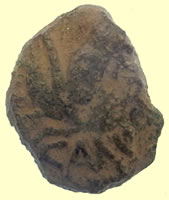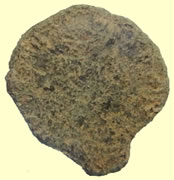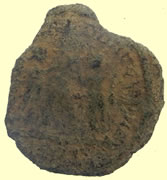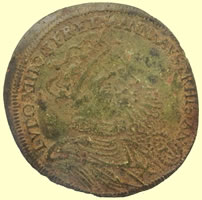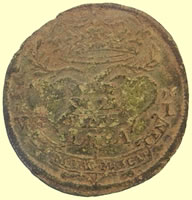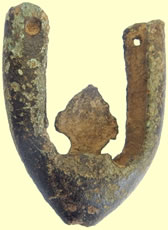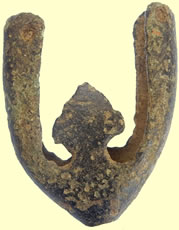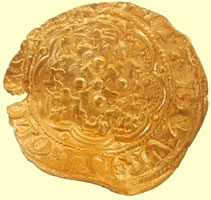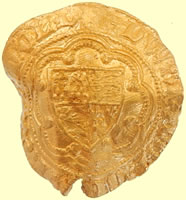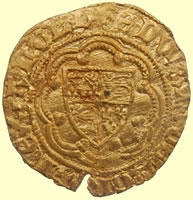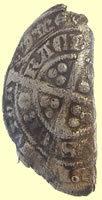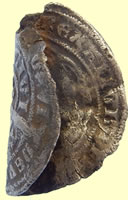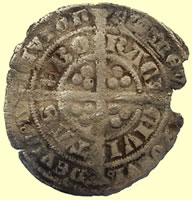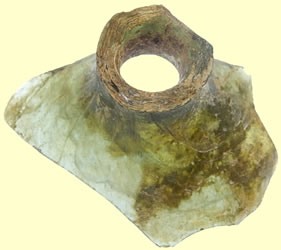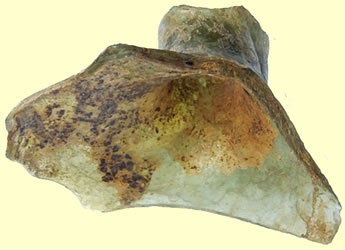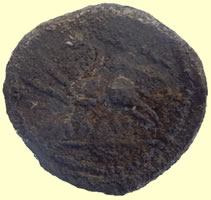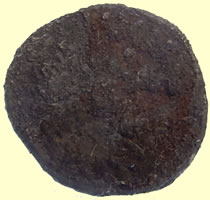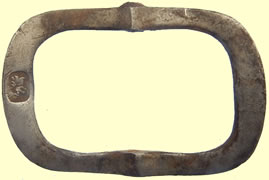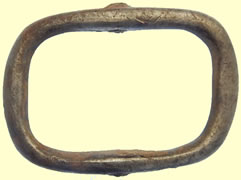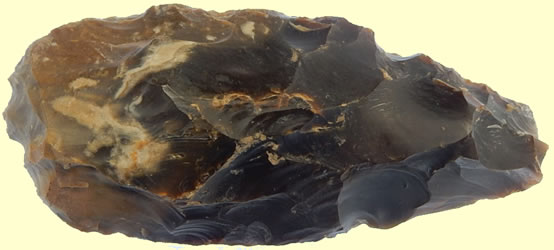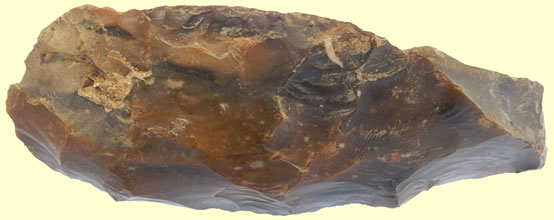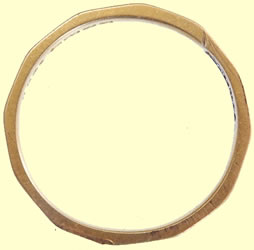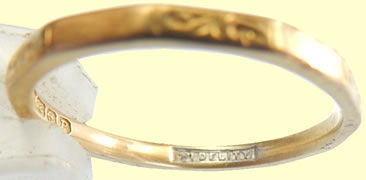

Metal detecting holidays in England with the World's most successful metal detecting club.
Twinned with Midwest Historical Research Society USA
2017 Feb finds |
 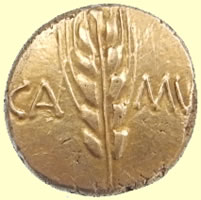 |
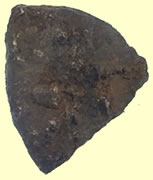 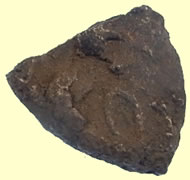 |
||
Celtic gold Cunobelin stater - 'linear' series, VA 1925-1. The earliest of the rule, perhaps from c. 20 AD, and a little rarer, with about 60 recorded here 15.95, 5.48g Sent to museum for recording |
50 BC Trinovantes British British G 'Early Clacton' gold stater Debased gold 0.89g, 9.91mm Sent to museum for recording and addendum to existing hoard |
||
Large great patina Roman bronze sent for ID 16g, 31.91mm Chris – nice sestertius! On the reverse is Providentia – holding a wand and resting on a long scepter, with a large globe at her feet. The portrait of Marcus Aurelius on your coin is very nicely done – often he seems not to have cared much for what his portrait appeared like on coins with a beard that often tended towards scraggly: This is a pretty typical portrait of Aurelius as Augustus on a sestertius with a Felicitas reverse:
Mark
|
|||
 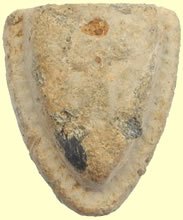 |
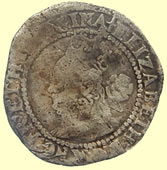 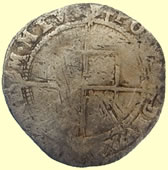 |
||
| c12thC Medieval heraldic shield type lead trade weight - hammer symbol | 1582 Elizabeth 1st hammered silver three pence - Sword mint mark | ||
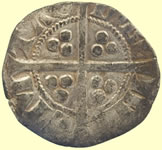 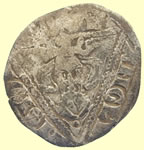 |
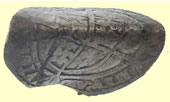 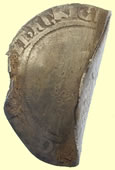 |
||
Irish 1279-1301 Edward 1st hammered silver penny - single pellet on Kings breast, pellet at start of Obv legend Obv EDWR ANGL DNS HYB Rev CIVI/TAS/DUBL/INIE - Dublin mint |
1551 Elizabeth 1st hammered silver three pence | ||
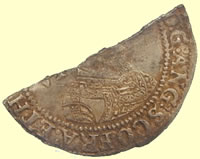 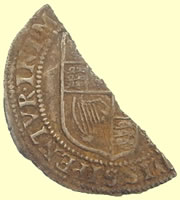 |
  |
||
| 1603-4 James 1st hammered silver hammered silver sixpence - First coinage | 1247 Henry III hammered silver voided half penny Rev - RIC/ARD - Moneyer Ricard |
||
 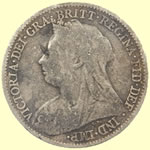 |
  |
||
| 1894 Victoria milled six pence | 1662 hammered copper trade farthing | ||
 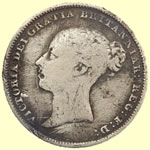 |
 |
||
| 1885 Victoria milled six pence | Georgian trade weight - Crown G cipher | ||
 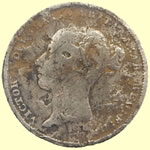 |
|
||
| 1851 Victoria milled six pence | Post medieval strap end | ||
Roman bronze coin or trade weight - unusually thick - sent for ID 17.94mm,7.08g Chris this traveled a LONG way to get there. This is a potin tetradrachm from the Provincial Roman mint at Alexandria, Egypt. Egypt was, legally, an estate wholly belonging to the emperor. As such, the money of the rest of the world was not legal for use there. Visitors had to surrender any money they had brought for its equivalent in the local Provincial currency – which was, itself, illegal to use anywhere outside of Egypt. Ie: Egypt’s economic system during the Imperial period was basically one of “plantation tokens” exclusively under the emperor’s personal control and whim. |
|||
 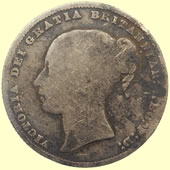 |
  |
||
| 1865 Victoria milled silver shilling | 1816 George III milled six pence | ||
 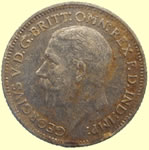 |
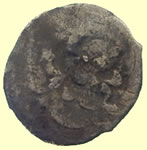 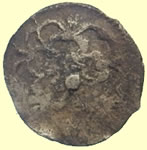 |
||
| 1930 George V milled six pence | Tiny 1625 Charles 1st hammered silver half penny - rose both sides, no legend type - 10.19mm, 0.32g | ||
3rd-4thC crossbow Roman brooch |
|||
11,000 flint scraper |
|||
 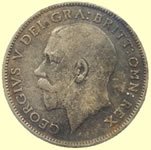 |
 |
 |
|
| 1912 George V milled silver coins | Medieval buckle | 19thC button | |
  |
 |
||
| 1788 George III gold guinea gaming token | 1500-1700 mount | ||
Anglo Saxon disc brooch This type of brooch was popular in Anglo-Saxon South of England in the fifth and sixth centuries. |
|||
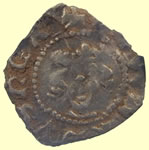  |
  |
||
1279 Edward hammered silver farthing - New issue with inner circle both sides - Type 28 Obv + EDWARDVS REX Rev CIVI/TAS/LON/DON - London mint |
1662 Nathaniel Lawerence Colchester hammered copper trade farthing | ||
 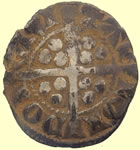 |
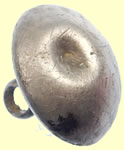  |
||
1279 Edward hammered silver penny Obv + EDWARR ANGLE DNS HYB Rev CIVI/TAS/LON/DON - London mint |
18thC silver button | ||
 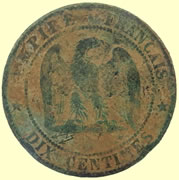 |
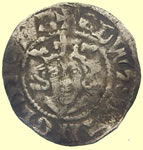 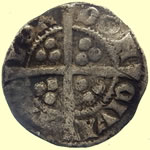 |
||
| 1854 French Napoleon III milled copper coin | 1279 Edward hammered silver penny Obv + EDWAR ANGLE DNS HYB Rev CIVI/TAS/LON/DON - London mint |
||
  |
  |
||
| 1216 Henry III hammered silver short cross half penny | 1205 William 1 The Lion - Scottish hammered silver half penny Obv WILAM Rev HUE WALTER |
||
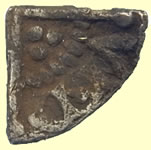  |
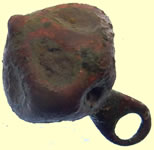 |
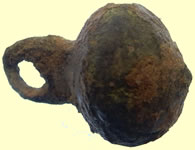 |
|
| 1247 Henry III hammered silver voided long-cross cross farthing | 16thC Tudor button | 16thC Tudor button | |
 |
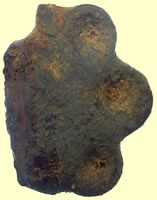  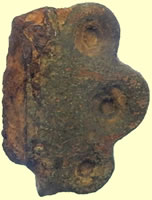 |
||
| Georgian watch winders | Medieval knife pommel | ||
 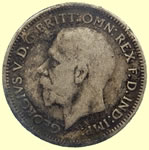 |
   |
||
| 1933 George V milled silver sixpence | 16thC Tudor clothing fastener | ||
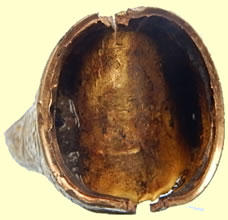 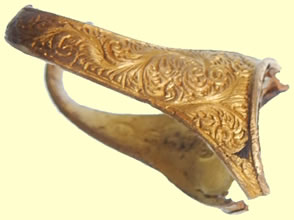  |
|||
1897 Victorian gold finger ring - 15 carat,0.625 Date e, Sheffield hallmark Maker CJ 4.51g, 21.22mm |
|||
Georgian Double sided seal ring - Continental Obv Crown SR Rev Susan 20.12mm dia,4.27g |
|||
  |
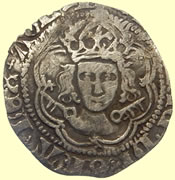  |
||
| Silver ring or buckle fragment ? | 1485 Henry VII hammered silver half groat Archb Savage - keys by neck , no tressure:ornate lettering, mm martlet Rev CIVI/TAS/EBO/RACI - York mint |
||
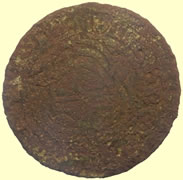  |
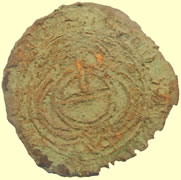 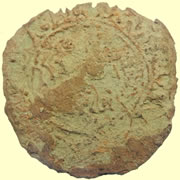 |
||
1586 Hans Krauwincel II Rose orb Jeton HANNS KRAVWINCKEL IN NVRENB |
1586 Hans Krauwincel II Rose orb Jeton HANNS KRAVWINCKEL IN NVRENB |
||
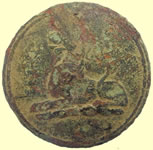 |
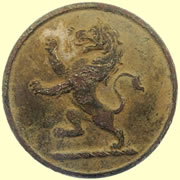 |
  |
|
| 19thC livery button | 19thC livery button | 1666 Thomas Peeke of Colchester Essex hammered copper trade farthing | |
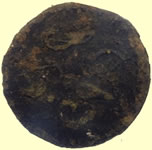  |
  |
||
| 1770's 5 shillings and 3 pence coin weight (1/4 gold guinea) | 1697 William III milled silver shilling | ||
  |
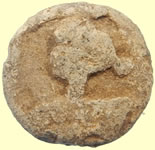 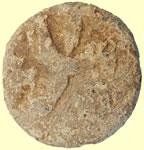 |
||
| 2ndC Roman fibular brooch | 17thC lead token | ||
 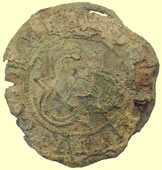 |
 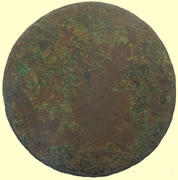 |
||
1586 Hans Krauwincel II Rose orb Jeton HANNS KRAVWINCKEL IN NVRENB |
1793 Coventry halfpenny Conder token Rev PRO BONO REPUBLICO |
||
  |
 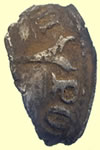 |
||
| 1634 Charles 1st hammered copper rose farthing | 16thC Elizabeth 1st hammered silver coin fragment | ||
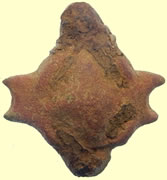 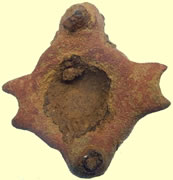 |
 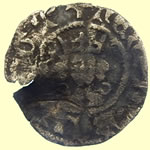 |
||
| c10thC Saxon strap divider | 1422-27 Henry VI First reign hammered silver half penny. A.2., roundabout mint mark Annulets by neck, annulets in centre of pellets in 2 qtrs Rev VILLA/CAL/ISIE - Calais mint |
||
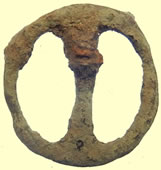 |
  |
||
| 17thC baldric buckle | 1918 George V milled silver three pence | ||
 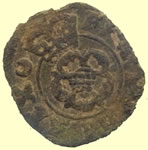 |
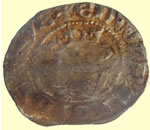 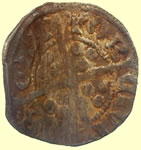 |
||
| 1634 Charles 1st hammered copper rose farthing | 1279 Edward hammered silver penny Obv + EDWAR ANGLE DNS HYB Rev CIVI/TAS/CAN/TOR- Canterbury mint |
||
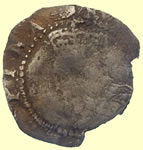 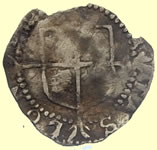 |
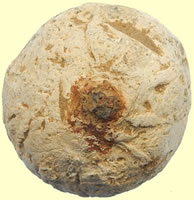 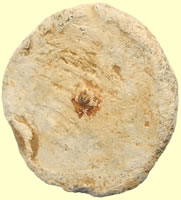 |
||
| 1590-92 Elizabeth 1st hammered silver penny - Hand mint mark | Medieval lead steelyard weight | ||
  |
 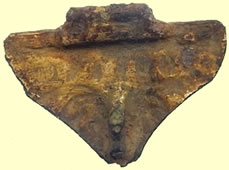 |
||
| Medieval hammered silver penny fragment | Victorian Gilded casket clasp 'SOUVENTA' | ||
 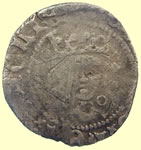 |
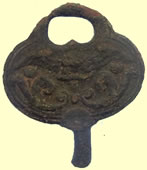 |
 |
|
1422-27 Henry VI First reign hammered silver penny. Annulets by neck, annulets in centre of pellets in 2 qtrs Rev VILLA/CAL/ISIE - Calais mint |
Georgian watch winder | 19thC livery button | |
 |
 |
 |
|
| 16thC Tudor button | Roman buckle tongue | WWII - Kings crown cap badge for the Kings's Own Dorset Yeomanry. |
|
 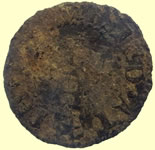 |
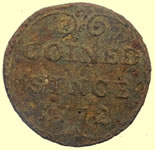 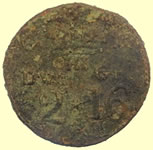 |
||
| 1655 Thomas Hubbart, grocers of Long Melford Suffolk – hammered copper trade farthing. Norweb 4412a | 1772 coin weight 2 pennyweight and 6 grains - half gold guinea Obv Coined since 1772 Rev Crown 2 DWT 6 g |
||
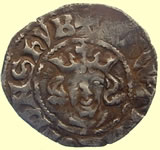 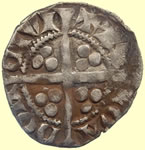 |
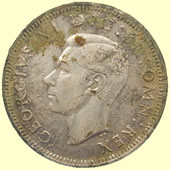  |
||
1279 Edward hammered silver penny Obv + EDWAR ANGLE DNS HYB Rev CIVI/TAS/LON/DON - London mint |
1942 George VI milled silver shilling | ||
Huge unknown buckle - medieval ? similar to Roman dolphin buckles |
|||
 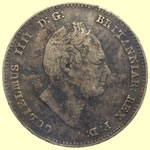 |
 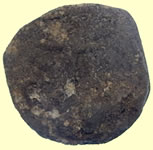 |
||
| 1835 William IV milled silver three pence | Unknown lead token - needs cleaning to reveal detail | ||
1811 George III milled silver 3 shilling Bank Of England toekn (36 pence)
|
|||
  |
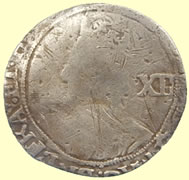 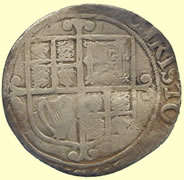 |
||
| 19thC Rose gold letter mount | 1639-40 Charles 1st hammered silver shilling (12 pence) Triangle mint mark |
||
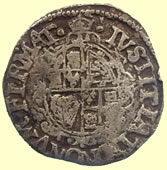 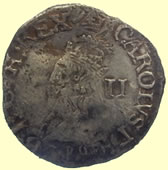 |
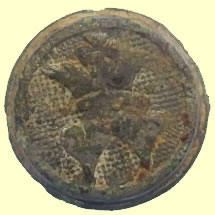 |
||
| 1635-36 Charles 1st hammered silver half groat (2 pence) - Crown mint mark | 17thC Charles II base metal button | ||
 |
 |
 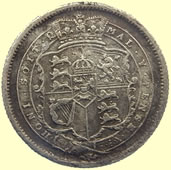 |
|
| Unknown Coninental Navy button | 1500-1700 mount | 1817 George III milled silver shilling | |
|
 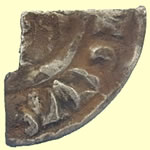 |
||
| Interesting Roman decorated widget - normally this is a mount with two rivet points but it has none.This is unusally concave like a cosmetic grinder but not of the usual design ? | 1216 Henry III hammered silver short cross farthing Rev N/LV - London mint |
||
16thC stone cannon ball - probably gun type was a Minion |
|||
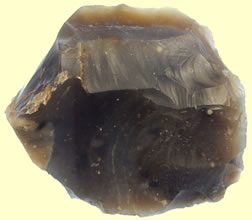   |
|||
| 11,000 BC flint scraper | |||
|
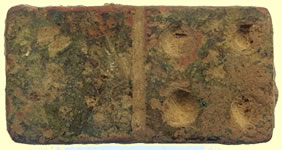 |
||
| Medieval gilded strap end | Georgian domino | ||
 |
 |
 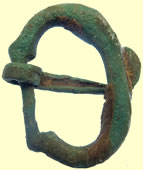 |
|
| 19thC button | 18thC clog fastener | Medieval buckle | |
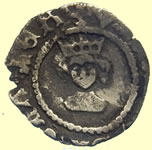  |
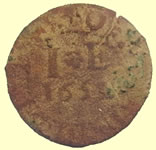  |
||
1485 Henry VII hammered silver half penny - Cross furchee - Open crown Obv HENRIC DI GRA REX Rev CIVI/TAS/LON/DON - London mint |
1653 Jeremy Erds of Manningtree Essex hammered copper trade farthing | ||
  |
 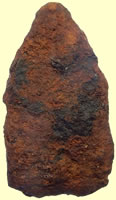 |
||
| 1247 Henry III hammered silver voided long cross half penny | First c10thC Saxon cast iron stirrup mount I have seen | ||
 |
 |
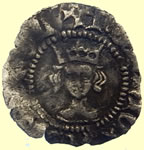  |
|
| LB Water button > | 17thC button | 1422-61 Henry VI hammered silver half penny - annulet issue - two annulets in oppositing quadrants Obv hENRIC REX ANGL Rev CIVI/TAS/LON/DON - London mint |
|
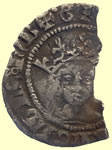 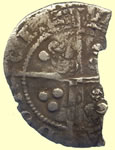 |
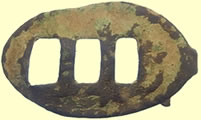 |
||
| Double struck 1327 Edward III hammered silver penny | 18thC clog fastener | ||
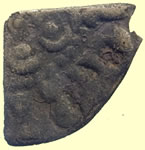  |
 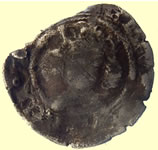 |
||
| 1247 Henry III hammered silver voided long cross farthing | 1327 Edward III hammered silver penny | ||
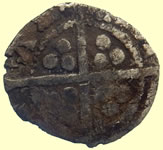 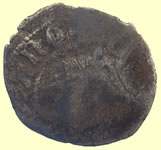 |
 |
||
1300 -1310 Edward II hammered silver half penny - Type 10 Obv **ANGL** Rev /x A *** - Newcastle mint |
WWI Imperial Essex Yeomanry button | ||
Pre 1603 James VI Eightpenny copper groat - Before accession to English Throne - Not issued for the first 16 yeras of his reign from 1567
|
|||
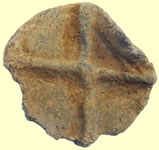 |
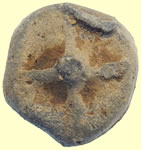 |
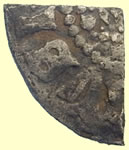 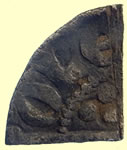 |
|
| 15th lead token | 15th lead token | 1247 Henry III hammered silver voided long cross farthing Rev /OLE/ - Moneyer Nicole |
|
|
 |
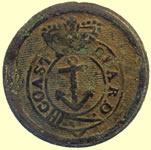 |
|
| 1247 Henry III hammered silver voided long cross farthing | Georgian buckle | 19thC coast guard button | |
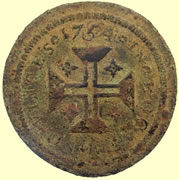  |
  |
||
1754 Portuguese Half Moidore gold coin weight 13 shillings and 6 pence |
1766 Russian lead bale seal | ||
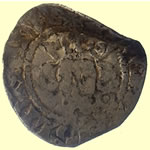 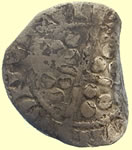 |
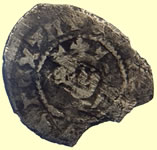 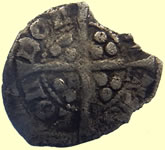 |
||
1279 Edward hammered silver penny Rev CIVI/TAS/LON/DON - London mint |
1300-10 Edward II hammered silver farthing- new issue with inner circles both sides - oval flan - Type 28f Obv ****REX AN Rev CIVI/TAS/LON/DON - London mint
|
||
 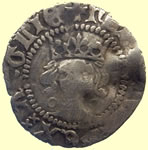 |
  |
||
1422-27 Henry VI First reign hammered silver penny. roundabout mint mark Annulets by neck, annulets in centre of pellets in 2 qtrs Rev VILLA/CAL/ISIE - Calais mint |
1939 George VI milled silver florin (24 pence) | ||
  |
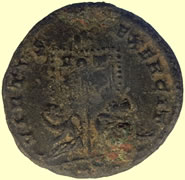 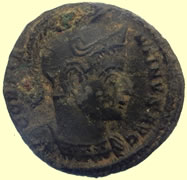 |
||
| 1760's 10 shilling and 6 pence ( 1/2 guinea) coin weight | 4thC Roman bronze sent for ID Chris, This is a nice one – I’ve seen too many which have been attacked by farm chemicals, etc. Unfortunately, I can’t read the mint mark in the exergue. I could tell you more if I knew the mint – if you can read some or all of the letters/symbols in the exergue, let me know and I can expatiate. About all I can say authoritatively is that the type dates to around 320-321 AD, it was mainly produced at Western European mints, and the denomination is “centenionalis”, a denomination introduced by Constantine In ca 319 to replace the dwindling follis. The centenionales were struck (shrinking over time as well, of course) right up to 348 and the reforms of Constantius II and Constans which brought in the Majorina-based coinage to replace the centenionales. The most typical example of the majorina coinage is the fallen horseman FEL TEMP REPARATIO with which you are, no doubt, familiar. The most familiar example of the centenionalis coinage of the Constantinin era is the GLORIA EXERCITVS, 2 soldiers flanking one or two standards which followed this and a couple other types, appearing about a decade later. Mark |
||
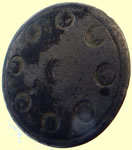 |
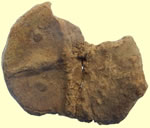 |
 |
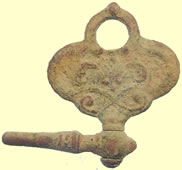 |
| Georgian button | 15thC lead token | Victorian cross pendant | Georgian watch winder |
 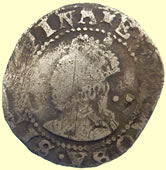 |
 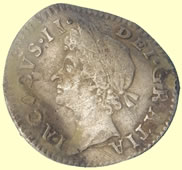 |
||
| 1594-96 Elizabeth 1st hammered silver half penny | 1687 James II milled silver four pence | ||
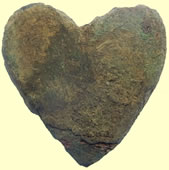 |
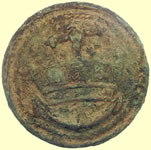 |
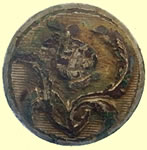 |
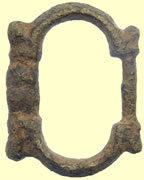 |
| 1500-1700 mount | Britain's Merchant Navy Bliss Bros Ltd Rd 665050 |
Georgian button | Medieval buckle |
10-40 AD Celtic Cunobelinus Pegasus Victory right bronze unit Obv Pegasas, CAMV below Rev Victory standingr,CV to l.,NO to r ABC 2927, VA 1979 Classed rare 1.04g.12.96mm
4thC Roman bronze sent for ID 1.27g,16.64mm in this condition and/or from these photos, I can’t tell which of at least half a dozen late 3rd century emperors is on the obverse, but I can tell you it’s an antoninianus and the reverse type is most likely CONCORDIA MILITVM with the emperor (usually) on the left and Jupiter (usually) on the right clasping hands, or handing him a globe on top of which may or may not be a small figure of Victory. And one from a little later with Victory on the left presenting a wreath to the emperor on the right – there are several variants on this 2 facing participants reverse and CONCORDIA MILITVM is not the only legend you might see – CLEMENTIA TEMP was another which often appeared. Or, it might be as late as the 1st tetrarchy: I kept these examples all in the CONCORDIA MILITVM vein, but IOVI CONSERVATORI and various other legends often accompanied this scene. The legend on yours, I feel pretty certain, is CONCORDIA MILITVM – it might not be, but it’s not possible to be completely certain from the photos. It definitely is a scene with the emperor interacting with a deity, or senior & junior emperors congratulating one another, etc. Mark
|
|||
 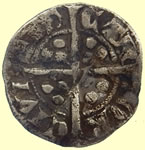 |
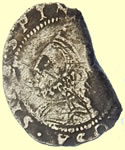 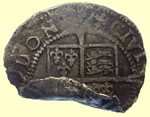 |
||
1310-14 Edward II hammered silver penny - E pointed back class 11b - Broken left ornament to crown (11 crown) Obv +EDWAR ANGLE DNS hYB Rev CIVI/TAS/CAN/TOR - Canterbury mint |
1560-1 Elizabeth 1st hammered silver penny- Cross Crosslet mint mark | ||
 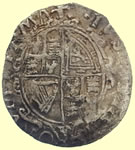 |
  |
||
| 1625 Charles 1st hammered silver penny | Victorian fob watch movement | ||
 |
 |
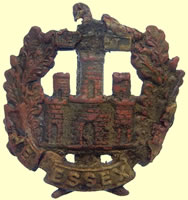 |
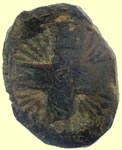 |
| Victorian Ipwich button | WWII Royal Air force button | WWI Essex Regiment badge | 17thC cross button |
1615 Louis XIII French style jetton Obv Crowned busts to right: LVDO.XIII.D.G.FR.ET.NA ANNA.AVSTR.HISPAN Rev Inscribed on a band between two hearts CARIT/SPES/FIDES and below NV-NQVAN.MAECES-CEN The King and Queen married 24th Nov 1615 |
|||
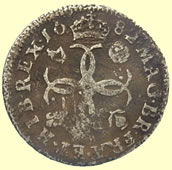 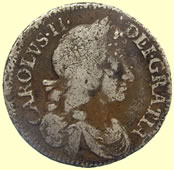 |
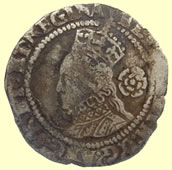  |
||
| 1682 Charles II milled silver four pence | 1580 Elizabeth 1st hammered silver half groat | ||
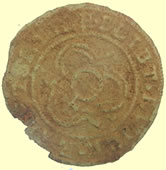 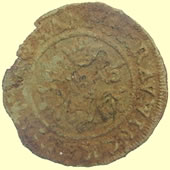 |
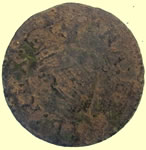 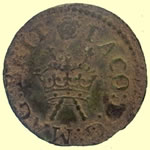 |
||
1586 Hans Krauwincel II Rose orb Jeton HANNS KRAVWINCKEL IN NVRENB |
1605-6 James 1st hammered copper farthing - Mintmark Rose General type Obv. IACO D G MAG BR (IT) Rev. FRA ET HIB REX |
||
 |
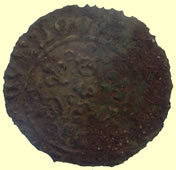  |
||
| 3 - 1636 Charles 1st hammered copper rose farthings | 1586 Hans Krauwincel II Rose orb Jeton HANNS KRAVWINCKEL IN NVRENB |
||
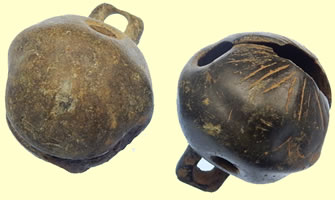 |
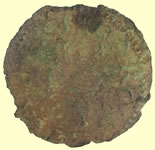 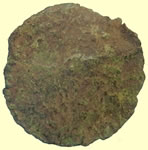 |
||
| 18th crotal bells | 1625 Charles 1st hammered copper Richmond type farthings – Harp on reverse |
||
 |
 |
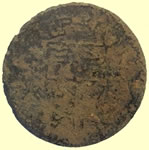 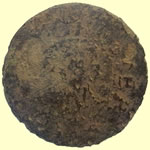 |
|
| A medieval (1250-1450) sheet copper alloy domed sexfoil belt mount | 17thC Jonas Whale of Colchester Essex, baker, hammered copper trade farthing Rev IWS Norweb 1234a |
||
Medieval handle |
|||
 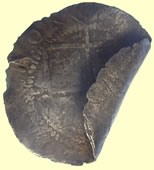 |
 |
 |
|
| 17thC Elizabeth 1st hammered silver half groat | Post medieval harness pendant | 17thC thimble | |
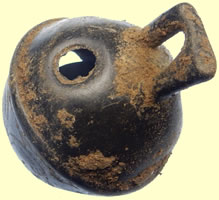 |
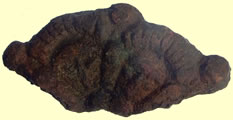 |
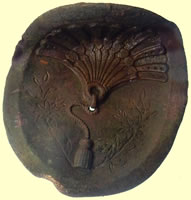 |
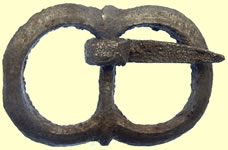 |
| 18thC cow bell | Medieval mount | Georgian mount | 1500-1650 buckle |
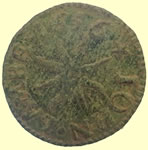 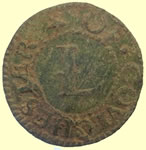 |
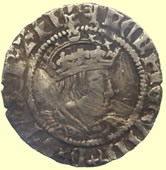  |
||
| 1656 John Lambe of Colchester Essex hammered trade farthing | 1531-44 Henry VIII hammered silver half groat - Archbishop Lee LE by shield |
||
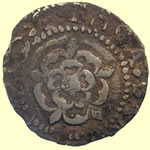 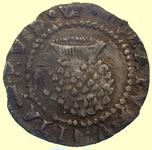 |
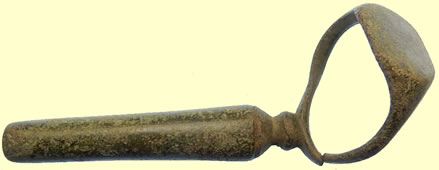 |
||
| 1607-9 James 1st hammered silver penny - Coronet mint mark | A 17th Century copper-alloy signet seal ring combined with a pipe tamper. The two artefacts were often combined in the 17th Century, as gentlemen would often loose their pipe tamper having had too much to drink. With such an artefact the user could wear his ring and conceal the tamper until needed. | ||
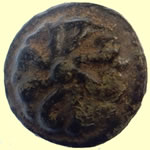 |
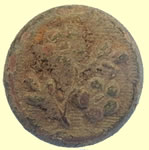 |
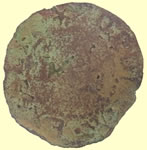 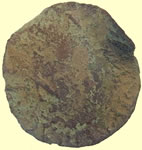 |
|
| Medieval mount | Georgian button | 17thC John Digby grocer of Coggeshall Essex hammered copper trade farthing | |
Medieval cast copper alloy dagger scabbard chape - English 40mm L |
|||
 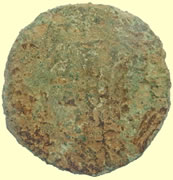 |
 |
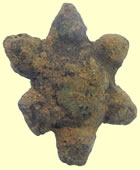 |
|
| 1340 French jetton | 1500-1650 buckle | Medieval mount | |
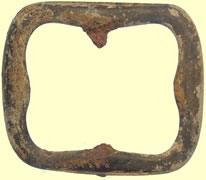 |
 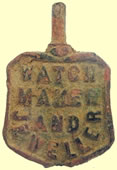 |
||
| Large Georgian buckle | Georgian adverstising watch winder | ||
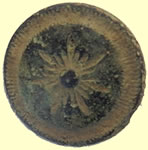 |
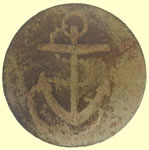 |
 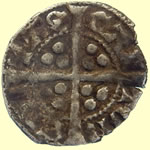 |
|
| Georgian button | 18thC Royal Navy button | 1279 Edward 1st hammered silver penny Obv +EDWAR R ANGLE DNS hYB Rev CIVI/TAS/CAN/TOR - Canterbury mint |
|
  |
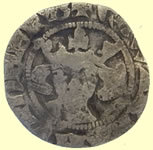 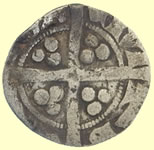 |
||
1247 Henry III hammered silver voided long cross half penny Rev OLE/ - Moneyer Nicole |
1279 Edward 1st hammered silver penny Obv +EDWAR R ANGLE DNS hYB Rev CIVI/TAS/CAN/TOR - Canterbury mint |
||
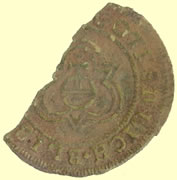 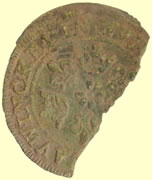 |
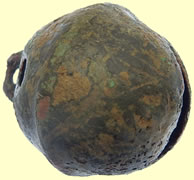 |
||
| 1553- 86 AD Hans Schultes German jetton | 17thC crotal bell | ||
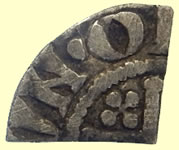 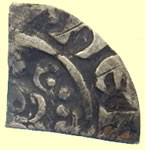 |
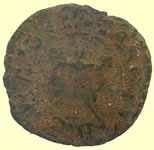 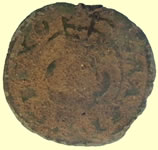 |
||
| 1216 Henry III hammered silver short cross farthing | 1634 Charles 1st hammered silver rose fathing | ||
 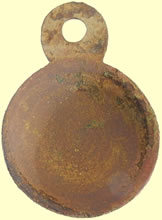 |
|||
| Georgian key escutcheon | |||
Fixed 1361- 69 Edward III hammered gold qtr nobel - Treaty period, Large pellet at centre of reverse cross Obv EDWAR DEI GRAC ANGL D 19mm,1.83g
|
|||
Fixed 1351-2 Edward III hammered silver groat (4 pence), annulet stops obv EDWA***** REX ANGLZ FR ** Rev CIVI/TAS/EBO/RACI - York mint |
|||
  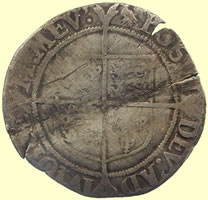  |
|||
| 1560-1 Elizabeth 1st hammered silver shilling - Martlet mint mark | |||
Georgian opened topped thimble |
|||
 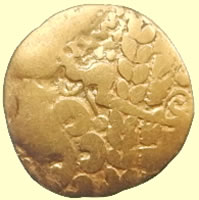 |
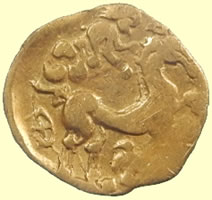 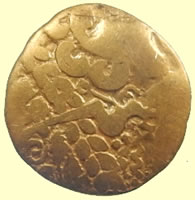 |
||
| 1.75g,14.57mm | 1.80g,14.30mm | ||
Iron Age, mid-2nd century BC One of the earliest coins in Britain Iron Age, mid-2nd century BC One of the earliest coins in Britain This is a superb example of the Iron Age die-engraver's art. It also represents what is thought to be the first type of coin ever to circulate in Britain. They were probably made on the Continent in northern France or Belgium. Gold coins like this crossed over the English Channel, perhaps in trade or as gifts between high-ranking individuals. Some of them were eventually buried in coin hoards and not recovered by their owners. The owner may have died, or simply forgotten where they had put them. Alternatively, the coins may have been intended as permanent, sacred offerings to the gods. They are mostly found today by metal-detectorists, in locations throughout south-east England. Another one was found at Fenny Stratford near Milton Keynes. The design of the coin is, at several stages removed, descended from the Greek gold staters of King Philip II of Macedon (reigned 359-336 BC). The hair on the left-facing head has grown considerably, while the original two-horsed chariot on the reverse of the coin has been transformed here into a lively, abstract depiction of a horse surrounded by a large array of symbols. I.M. Stead and S. Youngs, Celts, British Museum Pocket Treasury (London, The British Museum Press, 1996) D. Nash, Coinage in the Celtic world (London, Seaby, 1987) Reported as potential hoard to museum |
|||
  |
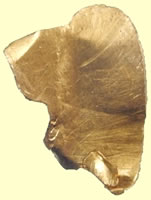 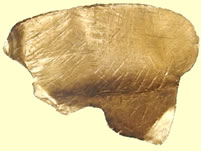 |
||
| 1216 Henry III hammered silver short cross half penny | Ancient gold sheet - hatch decoration - possible cup fragment 21.34mm,0.95g Reported as potential treasure |
||
Roman glass vessel top |
|||
10-40 AD Cunoblinus Leaping Griffin type Celtic silver unit Laureate bust r CVNOBEL in front INVS behind Griffin springing L,CAMV on ex. line ABC 2909 Classed as excessively rare 13.25mm, 1.19g
|
|||
 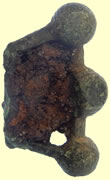 |
 |
||
| Medieval ' crown shaped'buckle | 16thC Tudor clothing fastener | ||
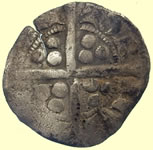 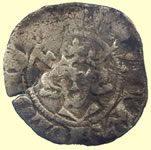 |
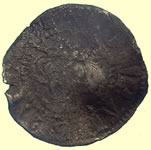  |
||
1279 Edward 1st hammered silver penny Obv +EDWARR ANGL DNS hYB Rev CIVI/TAS/CAN/TOR - Canterbury mint |
1279 Edward 1st hammered silver penny Obv +EDWR ANGL DNS hYB Rev CIVI/TAS/EBO/RACI - York mint |
||
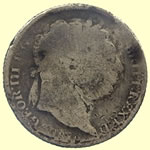  |
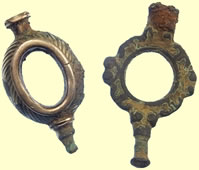 |
||
| 1816 George III milled silver sixpence | Georgian watch winders | ||
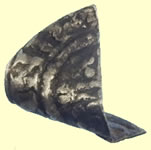 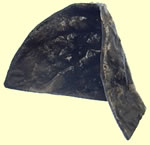 |
  |
||
| 1216 Henry III hammered silver half penny | 1158 -1189 AD Henry II hammered silver half penny ' Tealby' cross and crosslet type | ||
 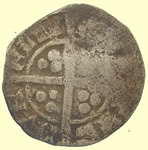 |
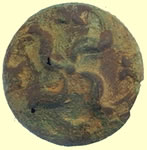 |
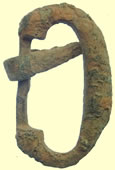 |
|
1279 Edward 1st hammered silver penny Obv +EDW*** ANGL DNS hYB Rev CIVI/TAS/DVR/EME- Durham mint |
Georgian button | Medieval D buckle | |
 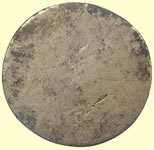 |
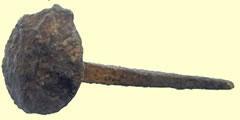 |
||
| 17thC William III milled silver sixpence - Coventry mint | Medieval mount | ||
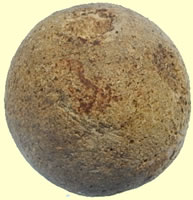 |
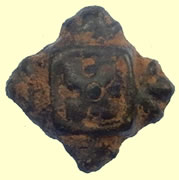 |
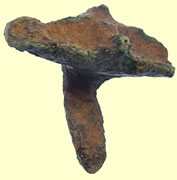 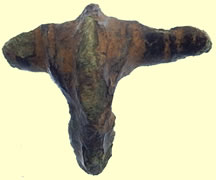 |
|
| 16thC stone caronade shell | Medieval mount | 2ndC Roman fibular brooch | |
 |
 |
  |
|
| 1500-1700 mount | WWI Horse Artillery lapel badge | Hooked mountChronologyPeriod to: POST MEDIEVAL Date from: Circa AD 1300 |
|
 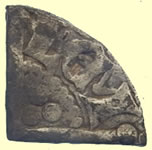 |
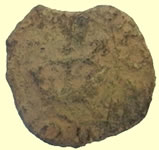  |
||
1247 Henry III hammered silver voided long cross farthing Rev LEM/ - Moneyer William |
1634 Charles 1st hammered copper rose farthing | ||
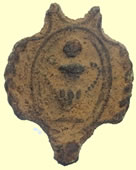 |
 |
 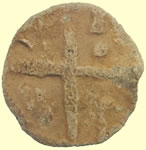 |
|
| Georgian watch winder | Georgian fob seal | 15thC lead token - type 2 | |
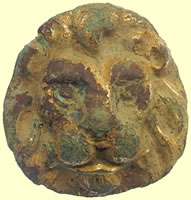 |
  |
||
| Vcitorian lion mount | 1846 Victoria milled silver sixpence | ||
 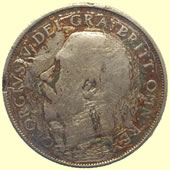 |
 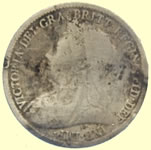 |
||
| 1926 George V milled silver shilling | 1899 Victoria milled silver sixpence | ||
  |
 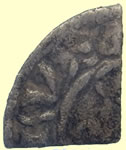 |
||
1247 Henry III hammered silver voided long cross halfpenny Rev VND/NIC/ - Moneyer Nicole of London mint |
1216 Henry III hammered silver voided short cross farthing Rev ONL/ - London mint |
||
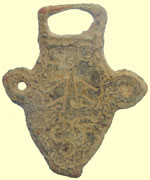 |
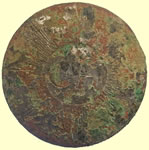 |
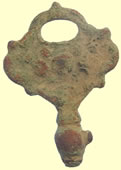 |
 |
| 17thC clothing fastener | CH Regiment button ?? | Georgian watch winder | WWII Royal Marines button |
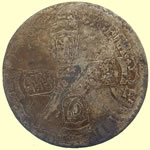  |
 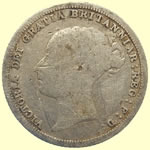 |
||
| 1696 William III milled silver sixpence | 1881 Victoria milled silver sixpence | ||
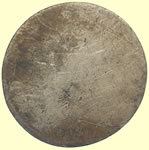  |
 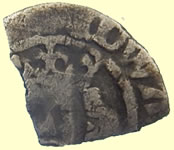 |
||
| 17thC William III milled silver sixpence | Medieval Edward 1st to 3rd hammered silver long cross farthing Obv EDWA*** Rev CIVI/T |
||
 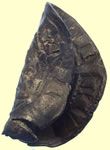 |
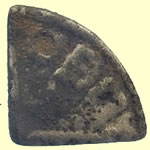 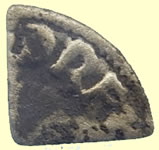 |
||
Medieval Edward 1st to 3rd hammered silver long cross penny Obv EDW**** hYB
|
Unknown legend on hammered silver voided long cross farthing
|
||
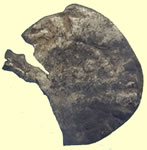 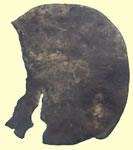 |
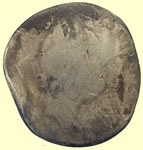  |
||
| Medieval hammered silver long cross halfpenny penny | 17thC William and Mary milled silver sixpence - love token | ||
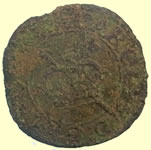 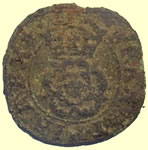 |
  |
||
| 1634 Charles 1st hammered copper rose farthing | 1649 Commonweath hammered silver two pence | ||
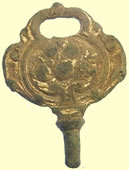 |
 |
||
| Georgian watch winder | 15thC casket key | ||
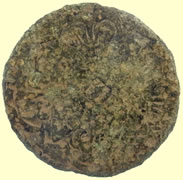 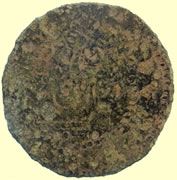 |
|
||
| 1340 French jetton | Georgian silver buckle - Continental mark | ||
11,000 BC flint axe head |
|||
  |
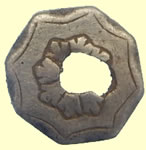 |
 |
|
| Georgian silver button | Georgian silver mount | 19thC hunting button | |
1864 - 18 carat gold ring - 'Fidelity' Maker HG&S - Henry Griffith & Sons Birmingham 20.22mm, 2.04g |
|||
c20-25AD Cunobelin silver unit The Cunobelin silver is very nice, and a rare type at that. Seated figure facing left. The only standard reference for the type is no. 308 in Spink's Coins of England, it's not in Van Arsdell or the BM catalogue. You can see the amphora which the seated figure is holding quite clearly, but the CVNOBE doesn't show up too well on either. I don't have the exact figures here for rarity, but I don't think there are more than a dozen of these recorded at most. Date is perhaps somewhere in the middle of Cunobelin's reign, say perhaps c. 20-25 AD. 13.97mm,1.27g |
|||
Got to new 2017 March finds page for more uploads |
|||
 |
|||
